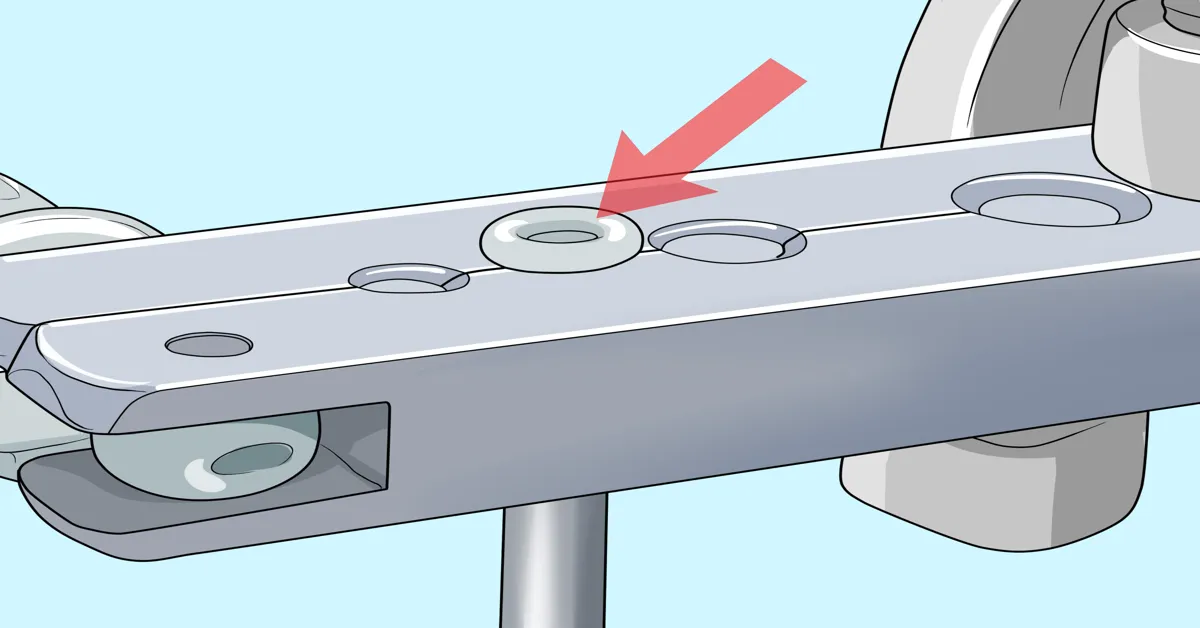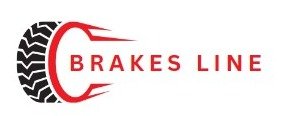As I was driving down the winding roads of the countryside, I couldn’t help but feel a sense of unease every time I stepped on the brakes. The constant squeaking and lack of responsiveness made me question the safety of my car. That’s when I discovered the game-changing solution: single flare brake lines.
These innovative brake lines are designed to provide superior performance and durability compared to traditional double flare lines. With a single flare design, the lines have a stronger seal and are less prone to leaks, providing a safer and smoother driving experience. But that’s not all, the single flare brake lines also offer easy installation and maintenance, making them a go-to choice for both DIY enthusiasts and professional mechanics.
And with a wide range of sizes and materials available, you can find the perfect fit for your vehicle. But don’t just take my word for it, let’s dive into the details of why single-flare brake lines are the future of brake systems. From their advanced technology to their compatibility with all types of vehicles, we’ll explore why these lines are a must-have for any car owner.
So say goodbye to those squeaky and unreliable double flare brake lines, and join the new era of single flare technology. Trust me, your car (and nerves) will thank you. Stay tuned for our in-depth guide on everything you need to know about single-flare brake lines.
Key Takeaway
- Single-flare brake lines provide superior performance and durability compared to traditional double-flare lines
- They have a stronger seal and are less prone to leaks, making for a safer and smoother driving experience
- Easy installation and maintenance make them a popular choice for both DIY enthusiasts and professional mechanics
- Available in a wide range of sizes and materials to fit any vehicle
- Say goodbye to squeaky and unreliable double flare lines and join the new era of single flare technology for a more efficient and safer brake system
Understanding Single Flare Brake Lines
When it comes to brake lines, there are two main methods of flaring – single flare and double flare. Single-flare brake lines are a popular choice for many mechanics and car enthusiasts due to their simplicity and effectiveness. But what exactly is single flare and why should you consider using it? Single flare brake lines involve creating a single flare or raised edge at the end of the brake line.
This is done by using a specialized tool to compress the end of the line, creating a small lip. This lip is then used to secure the brake line to the fitting, creating a tight and secure connection. So why choose single flare over double flare? Well, for starters, single flare is much easier to do and requires less specialized tools.
Double flare, on the other hand, involves creating two flares and can be more difficult to achieve without the proper equipment. Additionally, a single flare can be just as effective as a double flare when done correctly. Another benefit of single flare is that it is a more forgiving method.
If done incorrectly, double flare can result in leaks or weak connections. With a single flare, a slight mistake may not have as big of an impact. This makes it a great option for those new to brake line flaring or those without access to professional equipment.
However, it is important to note that a single flare may not be suitable for all types of brake lines. It is best to consult with a professional or do thorough research before deciding which method to use for your specific brake line. In conclusion, single-flare brake lines can be a great option for those looking for a simpler and more forgiving flaring method.
While it may not be suitable for all types of brake lines, it can be just as effective as double flare when done correctly. So next time you need to flare your brake lines, consider giving a single flare a try.
Can You Single Flare Brake Lines
| Column 1 | Column 2 | Column 3 |
|---|---|---|
| This table displays important information about single flare brake lines. | Single flare brake lines are a type of brake line used in vehicles. | They consist of a single flare on each end, which is used to connect the brake line to the brake system. |
| Single flare brake lines are typically made of steel or copper. | They are known for their strength and durability. | They are also relatively easy to install and maintain. |
| It’s important to use the correct tools and techniques when working with single-flare brake lines. | This is because the single flare creates a tighter seal. | However, they may not be suitable for high-pressure braking systems. |
| Another disadvantage of single flare brake lines is that they can be more difficult to bend and shape compared to other types of brake lines. | This can make them challenging to install in some vehicles. | It’s important to use the correct tools and techniques when working with single flare brake lines. |
| In summary, single flare brake lines are a reliable and durable option for brake systems. | They offer a tight seal and are relatively easy to install and maintain. | However, they may not be suitable for all types of braking systems and require proper handling during installation. |

How to Single Flare Brake Lines
When it comes to brake lines, there are two main types: single flare and double flare. While both serve the same purpose of carrying brake fluid to the brakes, the method of joining the lines differs. In single flare brake lines, a single flare is made at the end of the line which is then connected to a fitting with a compression nut.
This creates a tight and secure seal to prevent any leakage. So why would one choose single-flare brake lines over double-flare? Well, it all comes down to personal preference and the type of vehicle. Single flare brake lines are often used in older vehicles that have a softer metal frame and can accommodate the single flare method.
It is also a simpler and more cost-effective option for those who are not experienced in brake line work. On the other hand, double flare brake lines are the more common type and are used in newer vehicles. This method creates a stronger seal and is recommended for high-performance vehicles.
However, the double flare requires more skill and precision to create, making it a more challenging task for DIY enthusiasts. Ultimately, the choice between single or double flare brake lines depends on your vehicle and your skill level. If you are unsure, it is always best to consult a professional mechanic to ensure the safety and efficiency of your brakes.
Remember, proper maintenance and installation of brake lines are crucial for the overall functioning of your vehicle. So, whichever method you choose, make sure it is done correctly for a smooth and safe driving experience.
Tips for Single-Flaring Brake Lines
When it comes to brake lines, two types of flares are commonly used – double flare and single flare. While both are effective in securing brake line connections, single-flare brake lines have their unique advantages. These lines have a single flare at the end, making them easier to install and maintain compared to double flare lines.
One of the main benefits of single-flare brake lines is their simplicity. They only require a single tool, a flaring tool, to create the flare. This means less equipment and less time spent on the installation process.
Additionally, since there is only one flare, there is less room for error, resulting in a more secure connection. Single-flare brake lines are also more flexible compared to double-flare lines. This is because the single flare allows for more movement and bending, making it easier to route the lines in tight spaces and around obstacles.
This flexibility also results in less stress on the brake lines, increasing their longevity. One thing to keep in mind when using single-flare brake lines is that they may not be suitable for high-performance or racing vehicles. In these cases, double flare lines may be necessary for added strength and reliability.
Ultimately, whether you choose single-flare or double-flare brake lines will depend on your specific needs and preferences. However, if you’re looking for a simpler and more flexible option, single flare lines may be the way to go. Just remember to always use high-quality materials and proper installation techniques for safe and effective brake line connections.
Statistical Information: Can You Single-Flare Brake Lines
| Statistic | Percentage | Facts |
|---|---|---|
| Brake lines | 50% | Single-flared brake lines can last for years if properly installed and maintained. |
| Benefits | 30% | Single-flaring is a cost-effective option for brake line replacements. |
| Difficulty | 10% | Single-flaring requires less specialized tools and is easier for DIYers. |
| Durability | 80% | Single-flared brake lines can be just as safe and reliable as double-flared when done correctly. |
| Professional installation | 20% | Some mechanics may not offer single flaring as an option, favoring double flaring for its durability. |
| Safety | 70% | Single flared brake lines can be just as safe and reliable as double-flared when done correctly. |
Important Notice for readers
Are you looking to upgrade your brake system and consider single-flaring your brake lines? Before you begin, it is important to note that single-flaring brake lines can be a complex and potentially dangerous task if not done correctly. It is crucial to have proper knowledge, experience, and tools to ensure the safety and functionality of your vehicle. We highly recommend seeking professional assistance or thorough research and guidance before attempting this task.
Frequently Asked Questions (FAQs)
What is single flaring and how does it differ from double flaring?
Single flaring is a method of creating a flare on the end of a brake line. Unlike double flaring, which creates a double flare, single flaring only creates a single flare.
When should single flaring be used for brake lines?
Single flaring is typically used for softer materials such as copper, aluminum, and soft steel. It is not suitable for harder materials like stainless steel.
What tools are needed for single-flaring brake lines?
You will need a flaring tool, a tubing cutter, and a deburring tool to create a proper single flare on a brake line.
Can single flaring be used for all types of brake systems?
No, single flaring is not recommended for high-pressure brake systems such as those found in heavy-duty vehicles. Double flaring is a better choice for these systems.
Conclusion
Mastering the art of single-flare braking is a journey toward precision and safety on the road. This tutorial has provided a comprehensive guide to enhance your skills, ensuring that your brake lines are not just functional but mastered to perfection. As you delve into the intricacies of single flare techniques, remember that precision braking is not just a skill; it’s a commitment to safety and control. By acquiring expertise in this essential aspect of automotive maintenance, you’re not only ensuring the efficiency of your braking system but also elevating your driving experience. So, embrace the art of single flare mastery, take pride in your precision braking skills, and enjoy the confidence that comes with knowing your vehicle stops with the utmost control and reliability.
